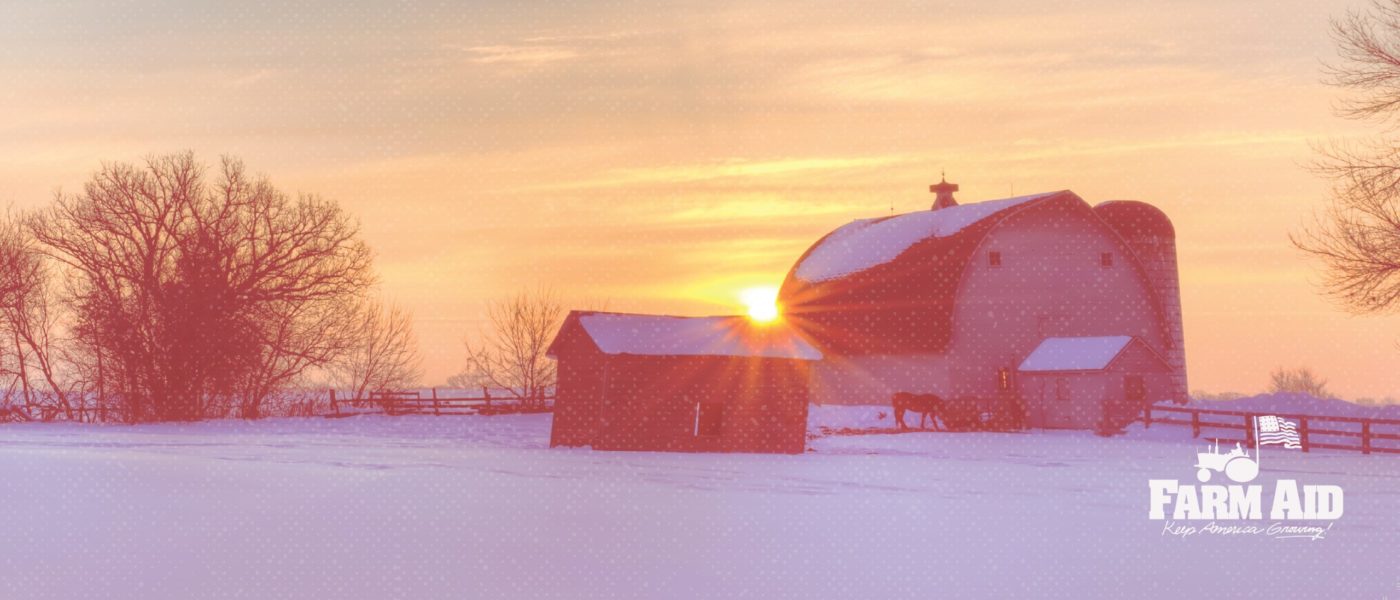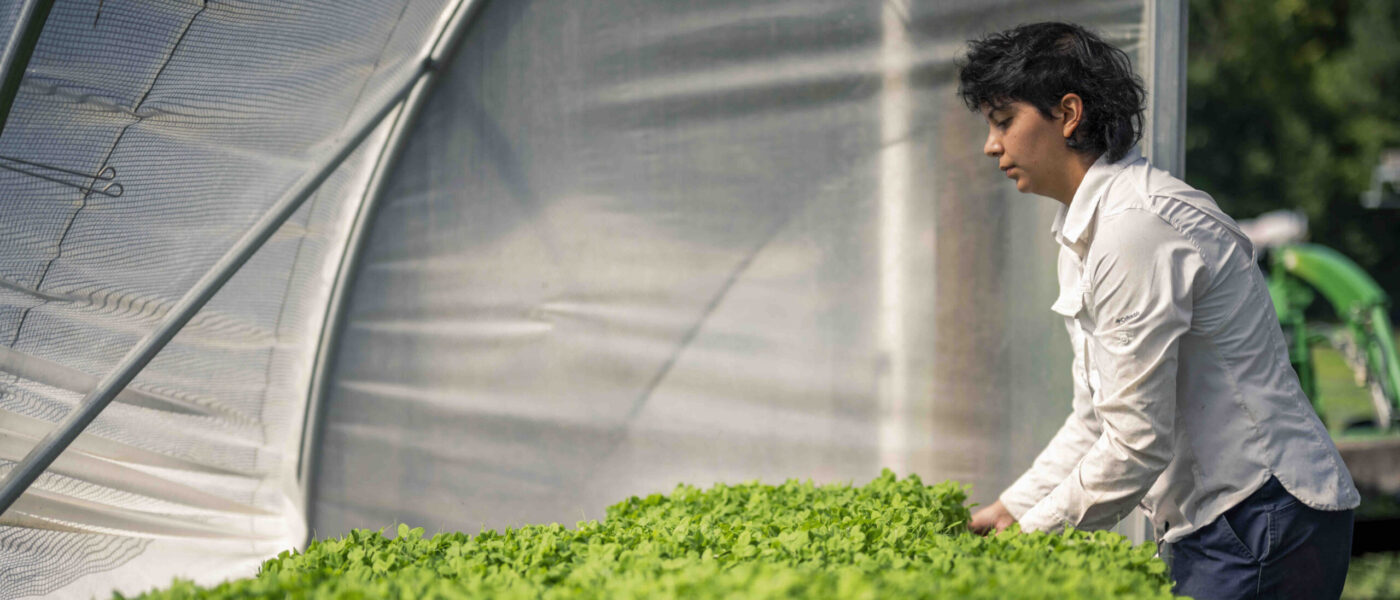September 2011
Dear Farm Aid,
Word is big cuts are in store for farmers in the upcoming Farm Bill. What is the Farm Bill and what will budget cuts mean for family farmers?
Thanks,
Eli K.
Seattle, WA
Thanks for your question, Eli – it’s a doozy, but such a crucial question. In recent years there has been a growing realization that the Farm Bill affects us all, because (1) we all eat, and (2) the Farm Bill covers a lot more than just what happens on the farm. Let’s dive in!
What is the Farm Bill?
The Farm Bill is a giant piece of legislation that makes headlines about every five years as it is renewed in Congress. Developed originally as an emergency measure for farmers during the Great Depression, the Farm Bill now addresses a wide swath of issues shaping the lives of every American. Its impacts on family farm agriculture and on eaters cannot be overstated, which is why we tune in here at Farm Aid every time it comes around.
The Farm Bill matters because it determines what food is grown, how it is grown and by whom. But it also influences our environment and natural resources, public health and nutrition, rural economic development and food security across the globe. The last Farm Bill, The Food, Conservation and Energy Act of 2008, was a 673-page behemoth divided into 15 sections called “titles.” It cost a whopping $288 billion and covered items as diverse as crop insurance for farmers, nutrition programs, forestry and ethanol production. So you can see right away, the Farm Bill covers a lot more than just how our food is grown.
By far the largest chunk of the Farm Bill is the Nutrition Title, the largest source of funding for federal nutrition assistance, with just over 66% of the Farm Bill’s money going to this title alone. That title includes the Supplemental Nutrition Assistance Program (SNAP) benefits (formerly called food stamps), The Emergency Food Assistance Program, and many other programs that improve nutrition for families, children, the elderly and others in need. The Farm Bill is also the largest source of federal funding for conservation efforts (accounting for about 9% of Farm Bill dollars), an important source of international food aid (less than 1% of Farm Bill funding), and also includes a bit of funding for beginning farmers, local and regional food systems development and organic foods.
We All Eat
As you can see, the Farm Bill covers a lot of ground. Different pieces of it are especially important to different people. But we have one thing in common: We all eat, and that’s why it’s important that we all take part in the Farm Bill.
Let’s take the sandwich you’re eating for lunch today, and just start with the bread. The key ingredient in your bread—whether it’s a soft piece of Wonder Bread or a heavy, sturdy multigrain—is wheat. That the Farm Bill would impact wheat is probably not so surprising. In fact, the bill’s opening chapter, Title I: The Commodity Title, is entirely devoted to wheat and non-perishable crops like it, including corn, soybeans, sorghum and cotton.
The policies of Title I deal with commodity payments and loans for farmers who grow these crops. There’s a common misperception that the entire Farm Bill budget goes to these payments and loans, but as we saw above, that’s not true. In fact, these safety net programs, along with crop insurance, account for only one-fifth of Farm Bill spending. Nonetheless, this Title could see the most drastic cuts in the upcoming Farm Bill. While commodity payments (often called “subsidies”) serve as an important safety net to protect crop farmers from price crashes and the whims of Mother Nature, there is much room for reform and even more debate about how these programs influence farmer livelihoods, public health and our environment. (The topic of subsidies is a BIG one—stay tuned for an upcoming Ask Farm Aid that will dig deeper into this issue!)
But wait…the Farm Bill’s impact on the wheat in your bread doesn’t stop there. The Research Title of the Farm Bill impacts the kind of seeds the farmer growing your wheat has access to, since it funds, among other things, scientific research into crop varieties. The Conservation Title includes programs that reward your farmer for ecologically sound growing practices that improve soil ecology and water systems on his or her land (like the programs this month’s Farmer Hero implements on his farm). Is your bread certified organic? If so, it was influenced by a series of programs created and developed in the Farm Bill.
All that, just in the making of a piece of bread!
Making Change in the Farm Bill
That the Farm Bill impacts the great majority of what we eat and what farmers grow is enough to make us tune in. But for us at Farm Aid, the Farm Bill is also the place where we can begin to realize our vision for a better food system. We have seen big changes for farmers and eaters made through Farm Bills of the past.
For example, the 1980s saw the development of programs to encourage conservation and environmental stewardship on the farm. The Conservation Reserve Program, Wetlands Reserve Program, Grasslands Reserve Program and many other programs were established in the 1985 Farm Bill to reward and provide technical assistance for farmers who conserve and enhance soil, air, water and fragile ecosystems on their land. Today, these programs are critical to helping farmers make sure their farms are protecting, not harming, our natural resources. Yet, these programs are threatened in a time of budget cutting. While we may see some savings from cutting these programs in the short term, it is crucial to remember that they preserve our soil and water so that we can farm into the future, saving us much more down the line.
The 2008 Farm Bill had more to offer for family farmers and good food advocates than any previous Farm Bill. For example, the new Beginning Farmer and Rancher Development Program was created to support training, education and technical assistance for beginning farmers and ranchers. The National Organic Certification Cost Share Program was added to reimburse farmers for a portion of their organic certification costs, helping to grow the number of farmers who commit to organic practices. The Specialty Crop Block Grant Program was introduced to assist in the competitiveness of specialty crops, like fruits and vegetables that are desperately needed in our diets. These programs have already produced success we can see: more farmers on the land, organic agriculture having more prominence in our food system and growth in direct markets like CSAs and farmers markets.
Another promising development in the 2008 Farm Bill was the new Livestock Title, which included a provision to require the U.S. Department of Agriculture (USDA) to ensure protections for farmers and ranchers who contract with meatpackers, handlers and other middlemen when they sell their livestock. Last year, USDA issued a rule—called the “GIPSA” rule (see here for more information)—that follows through on the provision, but the rule has been stuck in the muck from the heavy lobbying efforts of giant meatpackers who don’t want to lose the power they wield. This illustrates that even is something is written into the Farm Bill, it may not be implemented in a timely manner, or at all. (Though we certainly hope this is not the case of GIPSA, which is so crucial for the survival of family farmers and ranchers.)
For those interested in a strong, sustainable system of family farm agriculture, these programs are a step in the right direction. Yet all of these programs are in grave danger of losing their funding in the next Farm Bill or find themselves threatened as they are implemented through various federal agencies. That only underscores how important it is to make our voices heard and to make sure good programs are supported by our federal agencies. Our work simply doesn’t stop with the Farm Bill.
Get Involved
The next Farm Bill – the 2012 Farm Bill – will inevitably be passed in a belt-tightening budget environment where lawmakers are faced with both deep cuts and tough choices. There’s a lot at stake, especially for those interested in supporting beginning farmers, local and regional food systems development, conservation and the role of family farmers in creating rural community prosperity and economic development.
The Farm Bill impacts us all and we can all weigh in. Stay tuned to FarmAid.org for updates as the 2012 Farm Bill debate heats up. And use your own voice to remind Congress that the Farm Bill matters to all of us. Call your representatives and let them know what you want to see in the 2012 Farm Bill. It’s as easy as saying, “My name is Eli and I want to be sure the 2012 Farm Bill supports an agricultural system that produces good food from family farmers.”
Further Reading
Read our Farmer Hero profile of Tom Nuessmeier, who along with his family, runs an organic farm and hog operation in Le Sueur, Minnesota. He’s a fifth generation farmer and employs many conservation practices, such as the Conservation Stewardship Program (enacted as part of the 2002 Farm Bill), to keep the land productive for generations to come.

